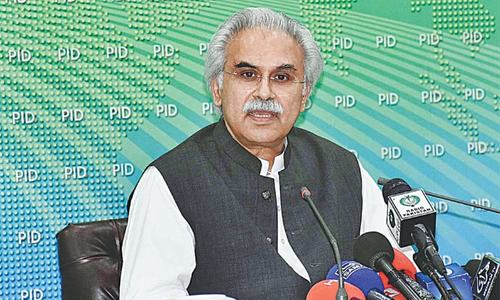IT was perhaps only a matter of time before Pakistan joined the ranks of countries hit by the coronavirus.
On Wednesday, the federal health ministry confirmed the first two cases of COVID-19 — in Karachi and Islamabad — prompting the authorities to close schools in parts of the country.
The national health authorities had been vigilant over the last few weeks, for instance, by shutting off the border with Iran (where the number of cases has risen to nearly 250) and checking international flight passengers at airports for symptoms.
Now that the highly infectious virus is in the country, they must double their efforts to contain its spread — a huge challenge indeed.
For one, state-of-the-art quarantine and treatment facilities are needed in virtually all districts with special instructions to healthcare staff on how to manage COVID-19 patients.
At present, there are only five quarantine facilities in the country — two in Islamabad, two in Rawalpindi and one in Karachi. This is clearly not enough to deal with a potential outbreak.
Suspected patients being transported to these facilities from the rural areas will have plenty of time along the way to transmit the virus to others.
The pace of diagnosis should also be speeded up, while equipping at least some of the more reputed health facilities to test patients for COVID-19 would ease the burden on the National Institute of Health that is currently conducting most of the diagnostic tests.
It is true that the situation does not call for panic, as the special assistant to the prime minister on health has said. But whether “things are under control” can only be assessed in the days to come, as Pakistan grapples with the virus in the midst of a dilapidated healthcare system.
To contain the virus and discourage the public from believing in conspiracy theories, the authorities would have to run a robust awareness campaign about the infection, give updated information about new cases, and share its plans to combat the illness.
The fact is that the government cannot afford to slacken its efforts.
According to WHO, COVID-19 has affected over 80,000 people in approximately 40 countries. New cases may be on the wane in China, where the virus originated, but the infection continues to spread in other countries, with South Korea reporting the most cases outside China.
The global outbreak should put even more pressure on the authorities here to mobilise all layers of the public health system to address the situation.
This means that all levels of the healthcare system — national, provincial and district — will have to work in tandem under a clear, comprehensive, globally accepted strategy. Anything less could be a recipe for disaster— and Pakistan, with its myriad health challenges, such as the resurgence of polio, has so far not proved itself adept at tackling crises.
Published in Dawn, February 28th, 2020














































